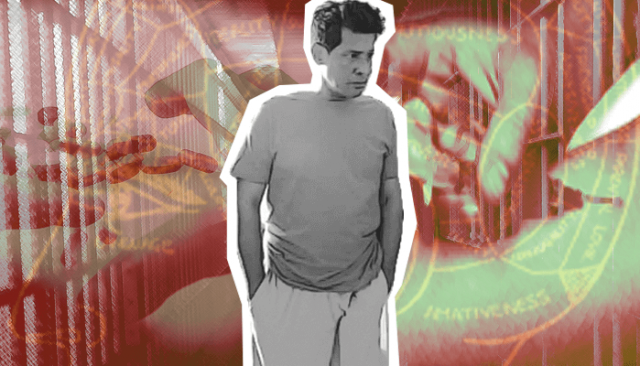
“Asintado” and “FPJ’s Ang Probinsyano” star Julio Diaz shocked fans when he was arrested by the police in a buy-bust operation in his residence in Bulacan last week.
Diaz was allegedly caught selling methamphetamine hydrochloride or shabu to a police asset. In a radio interview, Diaz admitted that drugs became part of his life, even after he was diagnosed with brain aneurysm in April 2016.
In that same year, the actor approached cops in an effort to clear his name. He was included in the drugs watch list released at the height of the Duterte administration’s war on drugs.
Diaz, however, had already stopped taking narcotics with the onset of aneurysm. But the actor revealed that he was tempted to take drugs again:
“Hindi ko rin maintindihan. May nagdadatingan na demonyo, natukso. Tumigil na ako talaga, it so happened na ganito. Natukso, tukso talaga.”
People expressed their dismay at the arrest, airing their impression that Diaz wasted his chance at a better life.
The deadly appeal of drugs
Using drugs for a prolonged period rewires an individual’s brain chemistry into thinking it’s a daily need — similar to eating meals or taking a bath.
Dr. Marvin Seppala, chief medical officer at the Hazelden Betty Ford Foundation, said that consuming substances enables the brain to release chemicals like dopamine.
That is not exactly a bad thing. Dopamine acts as a neurotransmitter that regulates the brain’s reward and pleasure centers, as well as people’s emotional responses. This is essential, as it drives us to eat because we derive satisfaction from it or to work because we are rewarded for doing so.
Too much dopamine, however, can dangerously affect the brain of a drug user and in turn, rewire it in a way he would become dependent on it.
Explaining drug relapses, Seppala said that the chemical “affects alcoholics and [drug] addicts to the point their brains re-prioritize what’s most important, such as eating and survival. The drug use becomes recognized [by the brain] as more important than survival itself.”
Repeated use can also destroy the person’s prefrontal cortex in the brain involved in problem recognition and solution planning.
Triggers and ways of coping
Dr. David Sack, an addiction psychiatrist and mental health expert, believes that a drug relapse is common and similar to chronic illnesses like asthma, diabetes and hypertension.
In his article in Psychology Today, he noted that former drug users fall back into the trap when they become exposed to drug paraphernalia or places where they’ve previously encountered drugs.
Sack wrote, “These ‘triggers’ are a byproduct of addiction’s two-stage formation process. In the first stage, the reward functions of the brain are hyper-stimulated—taking drugs makes users feel good, which encourages a repeat performance.”

“In the second stage, repeated overstimulation of the reward centers causes long-term changes in how other areas of the brain function,” he continued.
The doctor added that an individual should not expose himself to illegal substances for 90 days after he has pledged to let go of his habit. If not, he would be highly reactive to triggers.
These explanations and findings are a cue. Drug policy experts have found that the best approaches to help drug users and curb the drug problem are those afforded by medicine. — Art by Uela Badayos






